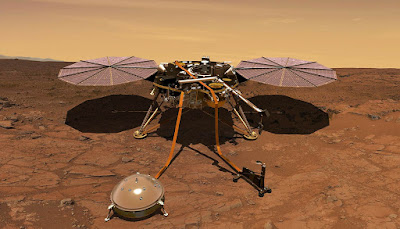ANCIENT ASH IS LIKELY BEHIND ODD MINERAL DEPOSIT ON MARS
Ashfall from old volcanic explosions is the most likely resource of an unusual mineral down payment close to the touchdown website for NASA's next Mars wanderer, a brand-new study discovers.
The research could help researchers assemble a timeline of volcanic task and ecological problems on very early Mars.
"This is among one of the most concrete items of proof yet for the idea that eruptive volcanism was more common on very early Mars," says Christopher Kremer, a finish trainee at Brownish College that led the work.
"Understanding how important eruptive volcanism got on very early Mars is eventually important for understand the sprinkle budget in Martian magma, groundwater wealth, and the density of the atmosphere."
keuntungan yang di dapatkan di judi bola
Volcanic explosions occur when gases such as sprinkle vapor liquify in below ground magma. When the stress of that liquified gas is greater than the shake over can hold, it blows up, sending out a intense shadow of ash and lava right into the air. Researchers think that these kinds of eruptions should have happened very very early in Martian background, when there was more sprinkle available to obtain combined with magma.
As the planet dried out out, the volcanic explosions would certainly have passed away down and provided way to more effusive volcanism—a gentler oozing of lava into the surface. There is lots of proof of an effusive stage on the Martian surface, but proof of the very early eruptive stage hasn't already been easy to spot with orbital tools, Kremer says.
ASHFALL ORIGIN THEORY
This new study looked at a down payment located in an area called Nili Fossae that is lengthy been of rate of passion to researchers. The down payment is abundant in the mineral olivine, which prevails in worldly insides. That recommends that the down payment is originated from deep below ground, but it hasn't already been clear how the material reached the surface.
Some scientists have recommended that it is yet another instance of an effusive lava flow. Others have recommended that a large asteroid impact dredged up the material—the impact that formed the giant Isidis Container where the down payment rests.
For this study, Kremer and associates used high-resolution pictures from NASA's Mars Reconnaissance Orbiter to appearance at the geology of the down payment in fine information.
"This work departed methodologically from what various other folks have done by looking at the physical form of the surfaces that are made up of this bedrock," Kremer says.



